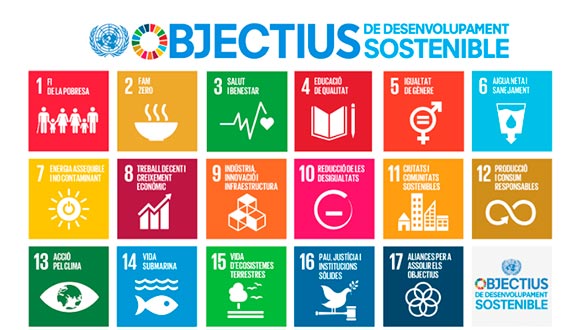Earth Observation and Essential Variables: useful for evaluating progress towards fulfilment of the Sustainable Development Goals
A CREAF research team comprising Joan Masó, Ivette Serral, Cristina Domingo and Alaitz Zabala has created a graphic that shows the links and gaps between Essential Variables, the Sustainable Development Goal indicators and the data available from Earth observation networks.

How can we measure our planet's health quickly and cost-effectively? Experts have regarded Earth observation (via satellites, drones and other airborne sensor systems) as the most viable option for a number of years, but have yet to reach consensus on what to measure. Which variables are the most crucial? Which provide the most valuable information? Measuring everything is out of the question. If we measure ferritin levels in blood to diagnose anaemia, what should we measure to detect biodiversity loss, for example?
Measuring everything is out of the question. If we measure ferritin levels in blood to diagnose anaemia, what should we measure to detect biodiversity loss, for example?
Some such variables already exist, and they are known as Essential Variables (EVs). Establishing a consensus on them is no simple matter, however. Among other characteristics, they need to be stably and effectively measurable over time. Each EV must therefore meet certain requirements in terms of relevance to the situation it is intended to measure; viability (it must be globally observable or inferable using a technically feasible and scientifically proven method); and cost-effectiveness (generating, saving and sharing its data must be affordable, drawing on Earth observation systems and, where possible, historical datasets).

There are currently Essential Climate Variables, Essential Biodiversity Variables and Essential Ocean Variables, among others, but no EVs for the UN's Sustainable Development Goals (SDGs) as a whole. The EV concept has been shown to be very useful and have an impact that extends beyond science to decision-making and politics, for example. So, why are there not yet EVs for measuring progress towards SDG fulfilment?
Aquest primer article pretén posar les bases per a que l’observació de la Terra i les Variables Essencials es puguin utilitzar també en el seguiment dels ODS.
Working through a team led by researcher Joan Masó and projects such as the European Observatory of Earth Observation Networks (ENEON) and GEOEssential, CREAF has spent several years trying to develop such a set of EVs. The team has recently published the first of a special collection of articles on EVs, organized by Masó and different colleagues, which will appear in the International Journal of Digital Earth. The first article aims to lay the groundwork for Earth observation and EVs to be used for monitoring the SDGs. According to its conclusions, in some cases there is no direct correspondence between existing EVs and SDG indicators. This is partly due to some of the SDGs having social and/or economic targets and social scientists having not yet adopted the EV concept. Additionally, while EVs useful for monitoring specific aspects of the SDGs do exist, the SDG indicator framework does not take them into account at present. The article's authors feel that the UN and the Group on Earth Observations (GEO) should work together to create new indicators based on existing EVs, and that GEO should advocate more widespread adoption of EVs and coordinate more ambitious initiatives, such as investigating Essential Agriculture Variables that might be better suited to measuring the indicators of SDGs 2 and 15.
To facilitate such work, the authors have created an interactive graphic that shows the links between SDG indicators and existing EVs, as well as Earth observation networks and the indicators for which they could provide data. A web tool that will be maintained by ENEON and which can be exported to various formats, the graphic is potentially of great use for identifying the main Earth observation networks, chiefly in Europe, from which information for evaluating progress towards fulfilment of the SDGs can be sourced.

Alternatively, view it directly below
Additionally, the authors have applied the DPSIR model, a framework that the European Environment Agency developed to describe interactions between society and the environment and their socio-economic consequences, to the SDG indicators. Doing so has made it possible to classify the indicators in question into the categories of driving forces, pressures, states, impacts and responses for the first time.







